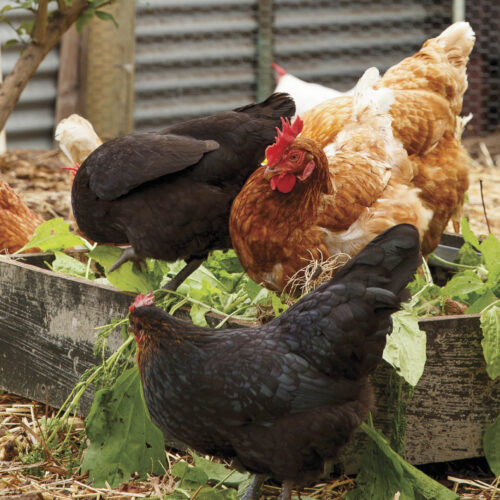Pocket-sized producers
2017-02-01T22:00:00+11:00
For a quail of a good time, try keeping these lively little egg layers that are well suited to small gardens, writes JESSAMY MILLER.
If you have limited space, but love the idea of collecting your own eggs, consider quail. These hardy birds lay daily, cost little to feed, and can even tackle garden jobs. They are low maintenance and mature quickly for the table, if you are so inclined. All in all, they’re the perfect bird for a small sustainable backyard.
Coturnix quail
The Coturnix japonica or Japanese quail is the most common breed in Australia. Birds live for two to three years, and will lay 200–300 eggs in their first year, tapering off thereafter. Four or five quail hens would provide a family with abundant eggs. Hens are larger than cocks, and lay mottled brown eggs that are bluish inside. Amazingly, each hen’s eggs have an identical shell pattern, like a fingerprint. Because they have been domesticated for centuries, Japanese hens rarely go broody and an incubator is needed for hatching.
The male’s cloacal gland, situated above the vent and which releases a foamy substance, appears dotted around the enclosure from sexual maturity onwards. Cocks make a shrill bird call rather than crowing, so may be kept where roosters are prohibited.
Quails are priced between $5–$15, and offered for sale on websites such as Gumtree or Quails Australia.
Other common breeds
King quail
King quail are found in the wild throughout Asia and Australia. Silver males are particularly attractive with bright plumage and orange legs. Kings weigh only 40g and are the most docile and easily housed. Cocks usually live with two or more hens, which will sit on the olive-green eggs and hatch their young. Kings are primarily kept for enjoyment.
California quail
Notable for their curving crest or plume, these are sociable birds that live in coveys or large family groups. They love to dust bathe together in a sunny spot, so shouldn’t be kept on wire. Hens will sit on around 12 eggs, and the family may raise chicks. Usually kept as aviary birds, they can be nervous and aggressive, and need a larger run.
Bobwhite quail
Originally from the USA, bobwhites can be raised 79 for meat and eggs, but more often as a novelty. Single pairings are ideal, as cocks will have a preferred hen. Bobwhites are adept flyers and may need their wings clipped. These birds will sit on their eggs, and raise their young, often as a couple. Chicks can fly by 10 days, are feathered by 5 weeks, and mature in 10–14 weeks.
For much more on quail eggs, meat, breeding, brooding and housing, plus different varieties to try, don’t miss Issue 93 ABC Organic Gardener OUT NOW!






